MIT
Latest
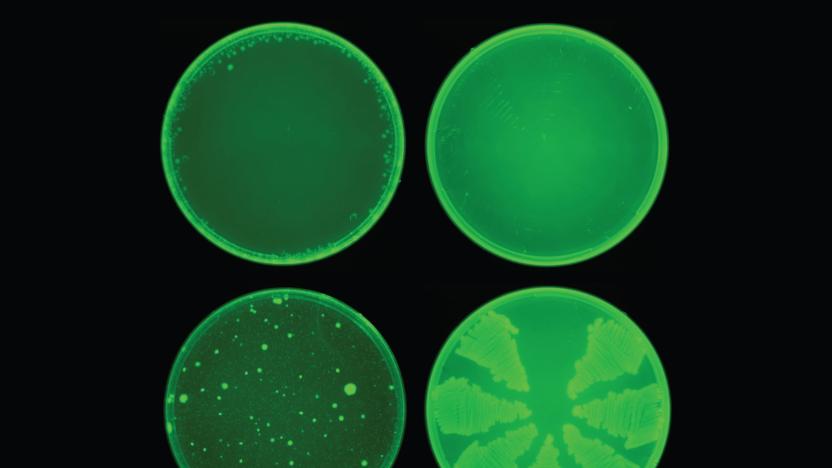
AI discovers antibiotic that kills even highly resistant bacteria
The use of AI to discover medicine appears to be paying off. MIT scientists have revealed that their AI discovered an antibiotic compound, halicin (named after 2001's HAL 9000), that can not only kill many forms of resistant bacteria but do so in a novel way. Where many antibiotics are slight spins on existing medicine, halicin wipes out bacteria by wrecking their ability to maintain the electrochemical gradient necessary to produce energy-storing molecules. That's difficult for bacteria to withstand -- E. coli didn't develop any resistance in 30 days where it fought off the more conventional antibiotic cipofloxacin within three days.
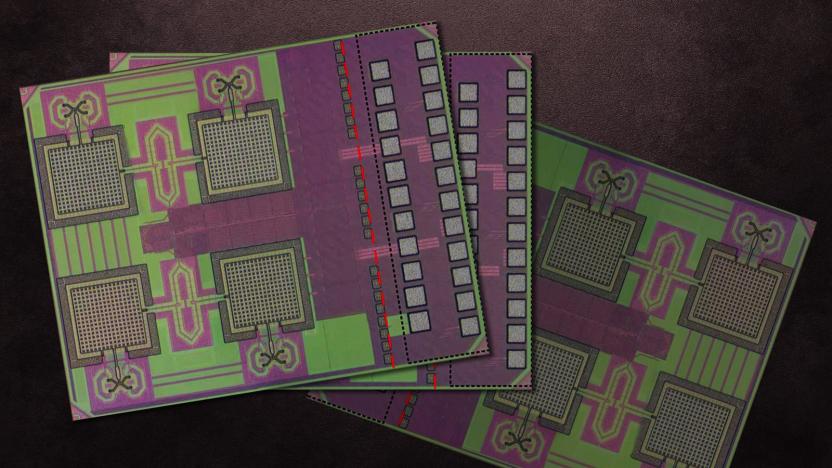
Minuscule ID chips could help spot even the smallest counterfeits
There are times when something is simply too small to tag it with existing technology, and that can be a serious problem when you're trying to fight counterfeits. MIT researchers might have a way to tag even the tiniest devices, though. They've created a very small (0.002 square inches) ID chip that's still secure enough to protect sensitive data. The team managed the feat through a monolithic chip powered solely by light, with antennas that use beam steering and RFID-style (but terahertz-level) backscatter to wirelessly send info to a nearby reader without requiring energy. These keep the design small while reserving enough electricity for encryption.

AI can automatically rewrite outdated text in Wikipedia articles
It's good to be skeptical of Wikipedia articles for a number of reasons, not the least of which is the possibility of outdated info -- human editors can only do so much. And while there are bots that can edit Wikipedia, they're usually limited to updated canned templates or fighting vandalism. MIT might have a more useful (not to mention more elegant) solution. Its researchers have developed an AI system that automatically rewrites outdated sentences in Wikipedia articles while maintaining a human tone. It won't look out of line in a carefully crafted paragraph, then.

MIT's 'smart surface' could improve your WiFi signal tenfold
There's a problem with stuffing wireless connections into ever-smaller devices: they can struggle to maintain a good signal when there's so little space for antennas. MIT CSAIL researchers might have a fix, though. They've developed an RFocus "smart surface" that "can work both as a mirror or a lens" to focus radio signals onto the right devices on either side of the "fence." In return, this improves the median signal strength by nearly 10 times, while doubling the median channel capacity in an office environment. Instead of just a handful of monolithic antennas, the RFocus prototype revolves around 3,000-plus tiny antennas with software that arranges them to maximize reception. In other words, RFocus is acting as a beamforming controller in the middle, as opposed to letting the radio endpoints -- transmitters and client devices -- manage this activity, which would be difficult to implement on tiny devices.

MIT's new GPS system uses satellite images to put you in the right lane
If you've ever used GPS navigation while driving in an unfamiliar place, chances are you've had more than one incident with last minute merging -- likely because the GPS hasn't picked up on the number of lanes on the road, or where they lead to. But this particular annoyance's days could be numbered, thanks to research from MIT.

MIT researchers use shadows to create a video of what happens off camera
In order for self-driving cars to park themselves, they'll need to be able to see around corners. A team from MIT's CSAIL may have a new way to do that. Using video footage of shadows, they've developed an algorithm that can recreate video of what's happening off the screen.

MIT creates an AI that understands the laws of physics intuitively
We often think of artificial intelligence as a tool for automating certain tasks. But it turns out that the technology could also help give us a better understanding of ourselves. At least that's what a team of researchers at the Massachusetts Institute of Technology (MIT) think they'll be able to do with their new AI model.
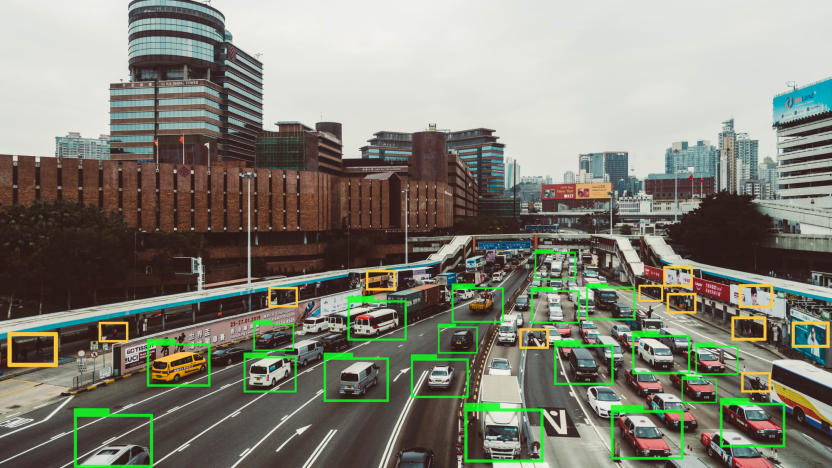
MIT researchers teach autonomous cars how to deal with selfish drivers
Self-driving cars are already making their way onto the roads, but there are challenges in having computers share space with human drivers. AIs tend to assume that all humans act the same and behave in predictable and rational ways -- but anyone who's driven in busy traffic knows that's not the case.
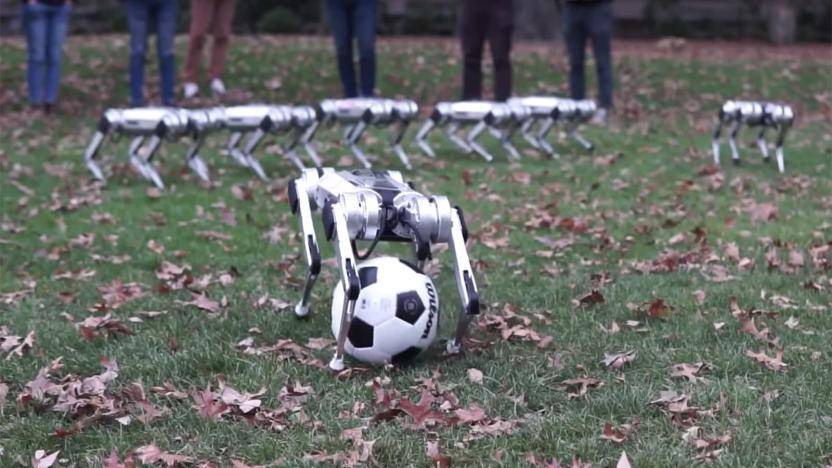
Watch a herd of MIT's Mini Cheetah robots frolic in the fall leaves
MIT wants to show that its Mini Cheetah robots aren't just solitary creatures. The school's Biomimetics department has posted a video of nine of the bots frolicking in the fall leaves, showing just what these pet-sized quadrupeds can do. The remote-controlled machines can backflip out of leaf piles, kick a soccer ball and have friendly tussles... well, if a bodyslam can be considered friendly. There's even some eerie coordinated dancing, in case you want to know how robots will socialize once the robopocalypse is over.
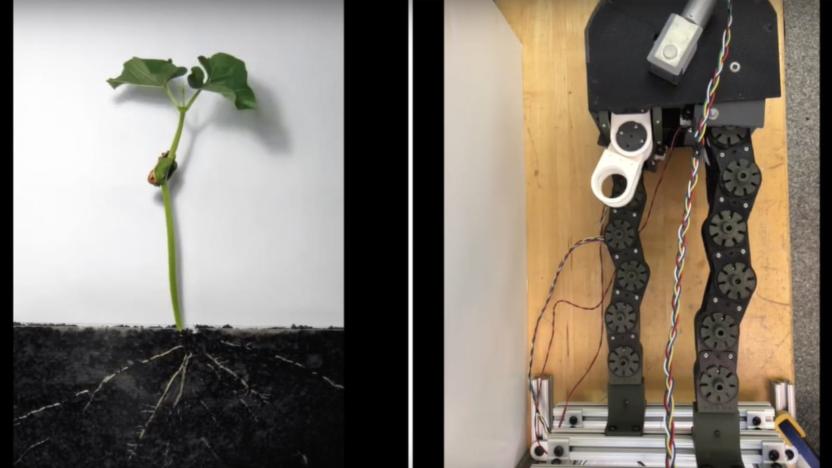
Plant-inspired robot can squeeze into tight spaces while carrying heavy tools
A team of MIT engineers believe that while soft robots can squeeze into spaces typical rigid machines can't, they're usually not sturdy enough to be fitted with tools like sensors, grippers and cameras. That's why they went another route when they created a solution for robotics' "last foot problem:" instead of designing a soft robot, they made a flexible one inspired by growing plants. It's made of rigid material, but its appendages look like bicycle chains, allowing it to twist and turn into whatever configuration is needed to reach its objective. Those appendages are also capable of carrying heavy loads at the same time.

MIT and Ford help delivery robots navigate to your doorstep
In order for delivery robots to drop your takeout, package or meal-kit at the door, they'll need to be able to find the door. In most cases, that requires mapping a location in advance so that the robot knows where to go. But to do that on a large scale is challenging and raises security and privacy concerns. Now, a team of engineers from MIT and Ford Motor Company think they might have an answer. They've created a technique that allows robots to navigate via clues, rather than maps.
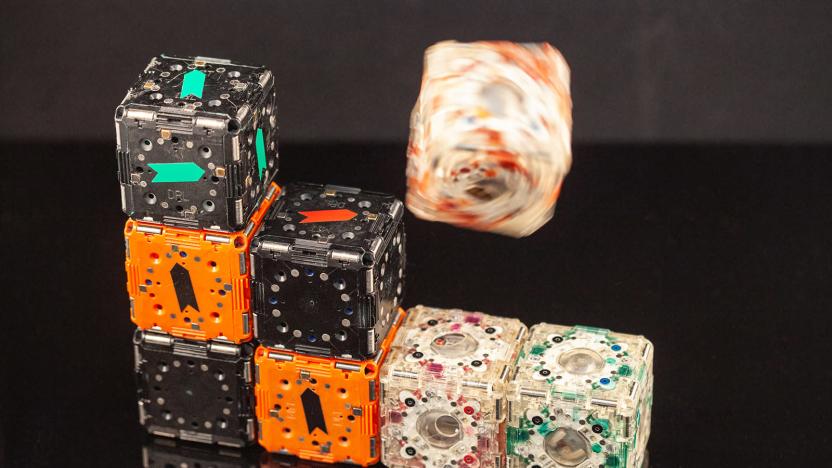
Block-like robots could assemble into emergency staircases
Next to Boston Dynamics' leaping humanoids, the dice-like M-Block robots from MIT might not look very cool. Considering their lack of limbs, though, the latest versions can perform some impressive tricks like jumping, climbing and assembling into larger structures, Big Hero 6 style. Those skills could one day help them assemble themselves into a staircase to rescue survivors trapped in a building, or be used as real-world Minecraft blocks.

MIT scientists develop a way to recover details from blurry images
A group of MIT researchers have developed a way to recover lost details from images and create clear copies of motion-blurred parts in videos. Their creation, an algorithm called a "visual deprojection model," is based on a convolutional neural network. They trained that network by feeding it pairs of low-quality images and their high-quality counterparts, so it could learn how the latter can produce blurry, barely visible footage.

BILL-E is a cute robot that builds structures block by block
A new robotics breakthrough could revolutionalize how we build everything from airplanes to bridges and even massive superstructures. A team of researchers at the Massachusettes Institute of Technology's Center for Bits and Atoms have created a new type of robot.

MIT-IBM developed a faster way to train video recognition AI
Machine learning has given computers the ability to do things like identify faces and read medical scans. But when it's tasked with interpreting videos and real-world events, the models that make machine learning possible become large and cumbersome. A team from the MIT-IBM Watson AI Lab believe they have a solution. They've come up with a method that reduces the size of video-recognition models, speeds up training and could improve performance on mobile devices.

MIT’s algorithm could improve imaging techniques used during pregnancy
The placenta plays a critical role in pregnancy: connecting the fetus to the maternal blood system. But assessing placental health is difficult because modern imaging techniques provide limited information. Researchers from MIT's Computer Science and Artificial Intelligence Lab (CSAIL) think they might be able to change that using a volumetric mesh-based algorithm.

GNU founder Richard Stallman resigns from MIT, Free Software Foundation
After reports revealed the lengths undertaken by some at MIT to accept donations from convicted sex offender and sex trafficker Jeffrey Epstein, MIT Media Lab director Joi Ito resigned. Now, computer scientist Richard Stallman, founder of the GNU operating system and author of an associated manifesto that pushed the idea of free software, has stepped down from his position with MIT's CSAIL and as president of the Free Software Foundation.

AI can gauge the risk of dying from heart conditions
AI's ability to predict threats to your health could soon include deadly heart conditions. Researchers at MIT's CSAIL have developed a machine learning system, RiskCardio, that can estimate the risk of death due to cardiovascular issues that block or reduce blood flow. All it needs is a 15-minute ECG reading -- from there, it gauges the danger based on the sets of consecutive beats in the sample. If the data is captured within 15 minutes of an event, RiskCardio can determine whether or not someone will die within 30 days, or even up to a year later.
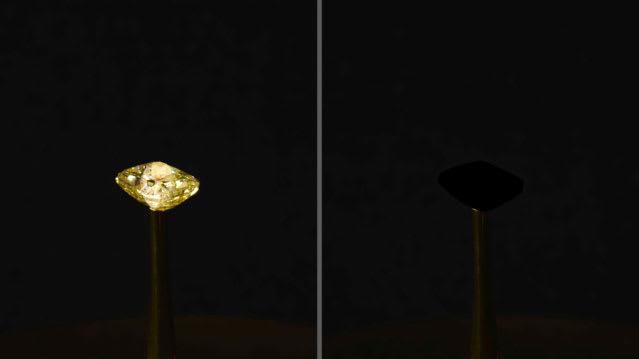
MIT scientists accidentally create the blackest material ever
Good news for goths -- black somehow just got even blacker. MIT engineers have cooked up a material that's 10 times blacker than anything else previously reported. Capturing more than 99.995 percent of any incoming light, the material is made of vertically aligned carbon nanotubes (CNTs) grown on chlorine-etched aluminium foil. And it was discovered by accident.
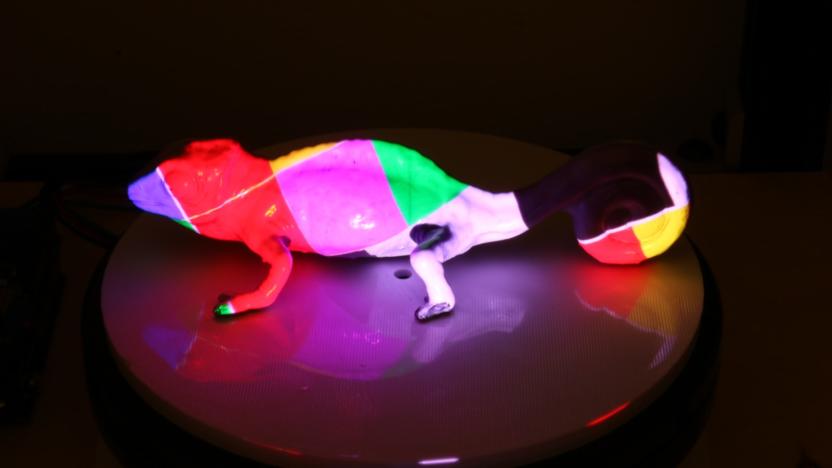
MIT’s color-changing ink could let you customize your shoes
Imagine if, rather than buy your favorite shoes in blue or red, you could buy one pair of shoes and change the color depending on how you feel each day. Maybe you'd decide to add multicolored flames or zebra print. A new, reprogrammable ink might let you do just that. PhotoChromeleon Ink, developed by MIT's Computer Science and Artificial Intelligence Laboratory (CSAIL), can change the color or pattern of an object when exposed to UV light.







